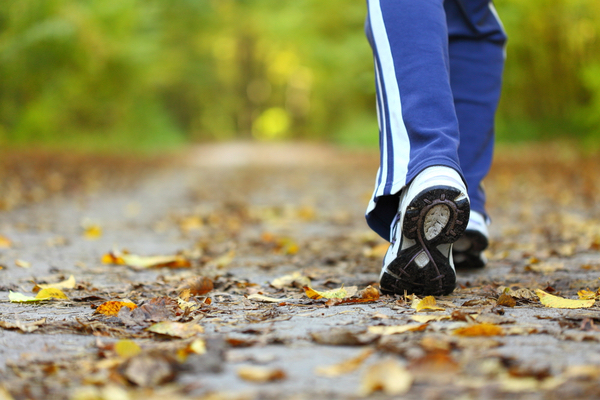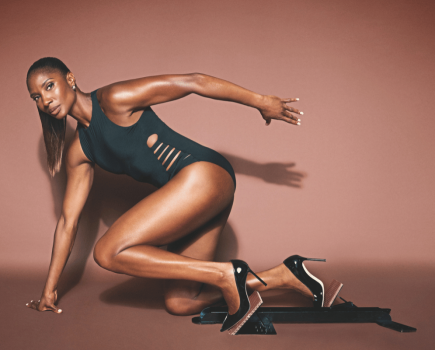Put on your hiking boots and shed extra pounds with our easy and effective two-week walk-fit plan!
When it comes to improving your health and fitness, it doesn’t get much simpler than walking. But its simplicity doesn’t mean that it’s not effective – walking has a vast array of benefits.
‘It’s an excellent way to reduce stress and improve cardiovascular health,’ says Kira Mahal, personal trainer and founder of London PT network, MotivatePT (motivatept.co.uk).
Low risk, high gain
‘You don’t need to be walking for hours to get the benefits; a brisk 20-minute walk each day is all it takes to improve overall health markers. Walkers are at less risk of developing type-2 diabetes, find it easier to maintain a healthy weight and have a lowered risk of heart disease. It can help to strengthen your bones and improve balance. And, unlike some other cardio-based exercises, walking has a very low risk of injury.’
To gain maximum benefit, you should be aiming for moderate intensity – this means walking at a brisk pace rather than a stroll. In fact, rather than counting steps, Public Health England wants people to focus instead on their pace and has launched the Active10 app to help. It tracks your walking and lets you know when you’re going at the right speed.
A large 2018 study from the University of Sydney backs this up, finding that walking at an average pace was associated with a 20 per cent risk reduction for all-cause mortality compared with a slow pace, while walking at a brisk/fast pace cut the risk by 24 per cent.
Upgrade your walk
If time is an issue, you can also cut the time you walk but still benefit by introducing intervals of higher intensity walking. A 2019 Japanese study on middle aged and older people found that interval walking training for just 50 minutes a week brought significant improvements in aerobic capacity and a 17 per cent decrease in risk of lifestyle-related diseases. Study participants walked at 70 per cent of their maximum capacity for three minutes then at 40 per cent for the next three minutes for five or more sets.
Good technique will also make a big difference to the benefit you gain. ‘Make sure you have good posture, pulling your shoulders back, keeping a neutral spine and ensure your eyes are facing forwards not down,’ says Kira.
Use your arms
‘This allows you to breathe more easily by opening your chest and making sure tension isn’t building up in your neck and shoulders. And use your arms! Having your arms at a 90 degree angle, following your strides in a fluid motion, can help you walk more quickly and will also increase the amount of energy you’re expending.’
And it’s not just physical benefits you’ll see and feel. ‘It can help to reduce feelings of anxiety and give you time to reflect on your thoughts,’ says Kira. ‘To motivate yourself, make walking something to look forward to. Either set up a new playlist, have a podcast series or audiobook that you’ve been looking forward to listening to.’
Try our two-week plan and get in your stride…
WEEK ONE
Monday: 15 minutes of brisk walking.
It’s the first day of your new walking routine, so enjoy it. Plan it into your day, pick a nice park or some nearby countryside and get going! Wear trainers or walking shoes with a fairly flexible sole. If you’re walking off-road, invest in a pair of trail shoes, which have extra grip for muddy paths.
Tuesday: 15 minutes of brisk walking.
In these first few days, you’re aiming to start building your fitness and make walking a habit. Think about the best time of day for your walks and schedule them in. You might feel that getting up a bit earlier in the winter for a walk is difficult, but the reward is that you get to walk at sunrise.
Wednesday: 20 minutes of brisk walking
Find a local walk that takes in some hills. They don’t have to be huge steep slopes – just some undulation to challenge you a little and get you working a bit harder. Aim for 20 minutes and really power up the hills, using your arms as accelerators. Adding in these hills helps build strength in your legs and bottom, and boosts the cardiovascular benefits of your daily walk.
Thursday: 20 minutes of brisk walking
Today, add in some strength work for your upper body. Every five minutes or so, stop at a bench and do 10-15 press-ups. Start with your body in a straight line, either place your hands on the bench backrest (easiest) or on the seat (harder) and lower yourself up and down. If you’re not in a park, use a tree or wall for standing press-ups.
Friday: 20 minutes of brisk walking
Focus on your pace and technique. Good posture will help you avoid getting aches and pains from your daily strolls, so make sure you’re not slouching forward or looking at the ground. Imagine a string from the top of your head, pulling you up tall. See if you can keep up that briskness for the whole walk without unconsciously slipping into a stroll.
Saturday: 20 minutes of brisk walking
Today when you’re out on your walk, find a step or park bench every five minutes and step up on to it, then step back down. Lead with your right leg, then step back down with the right leg first. Then step up with the left, stepping back down with the left. Aim for 6-8 step-ups each time you stop.
Sunday: Rest day or mobility work at home
Complement your walking witha Pilates or yoga YouTube video to help build up your core stability and get the good mobility needed for fast, efficient walking.
Some well-chosen stretches can help you avoid some potential pitfalls of walking, such as achy backs and stiff legs and feet. Try Brett Larkin’s Easy Yoga for Your Feet and Ankles (15-min). You can find it here.
WEEK TWO
Monday: 25 minutes of interval walking
Warm up by walking for five minutes. Then do two minutes at a pace that you couldn’t sustain for the whole walk, so you are a bit more out of breath than usual; then two minutes at a steady pace. Do this four times. Then walk at a steady pace for the final four minutes.
Tuesday: 25 minutes of brisk walking on a hilly route
Return to your previous hilly route, or find a new one. If it only has one or two short inclines, walk up them, back down and up them again, then continue with your walk so you get as much of a hill challenge as possible.
Wednesday: 25-30 minutes of brisk walking
Stride out briskly and make sure you keep up the pace. Swing your
arms to help your speed and look ahead of you. Repeat the upper body work you did in Week 1 by stopping to do some bench or tree press-ups every five minutes. Try to add five press-ups to the number you managed last week.
Thursday: 20 minutes of brisk walking
Walk for five minutes to warm up. Then every three minutes, lunge walk for 16-20 paces. Keeping your torso upright, take a big step forwards and bend your front knee to 90 degrees (or as close as you can get it), push back up, swing the back leg through and repeat. Lunge walking opens up your hip flexors and strengthens the muscles in your legs and bottom.
Friday: Rest day
If you want to, you can do a 15-minute steady walk. Include some mobility work at home as well, as you did on the Sunday of Week 1. Some stretches or a yoga session are perfect. Maintaining mobility and flexibility will mean that you can walk further and faster without picking up injuries from tight hips or lower back.
Saturday: 30 minutes of brisk walking
Add in intervals into your training once again. Warm up by walking at a steady pace for five minutes and then aim for three minutes at a higher pace, with two minutes of recovery. Do this four times so you get 20 minutes of interval training. Finish
with five minutes at a steady pace to cool down.
Sunday: 35 minutes of brisk walking (or longer if you wish)
Your stamina and strength will have progressed hugely in the past fortnight because of all the work you’ve done. Enjoy your new fitness and include some of the moves you’ve done in the last two weeks, such as press-ups and bench stepping.
You’ll notice that walking for this length of time at a brisk pace feels easier. The world is now your walking oyster!








